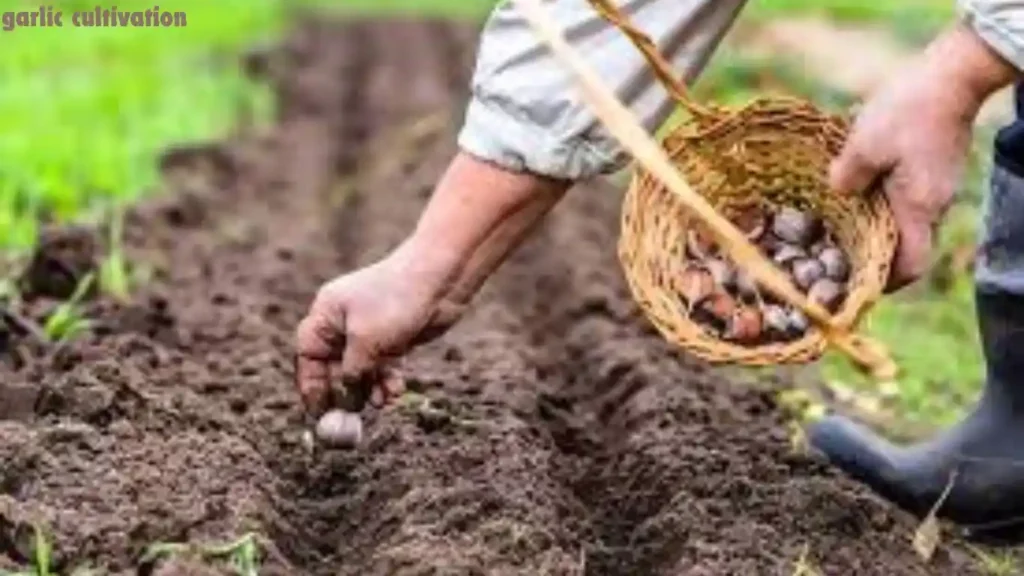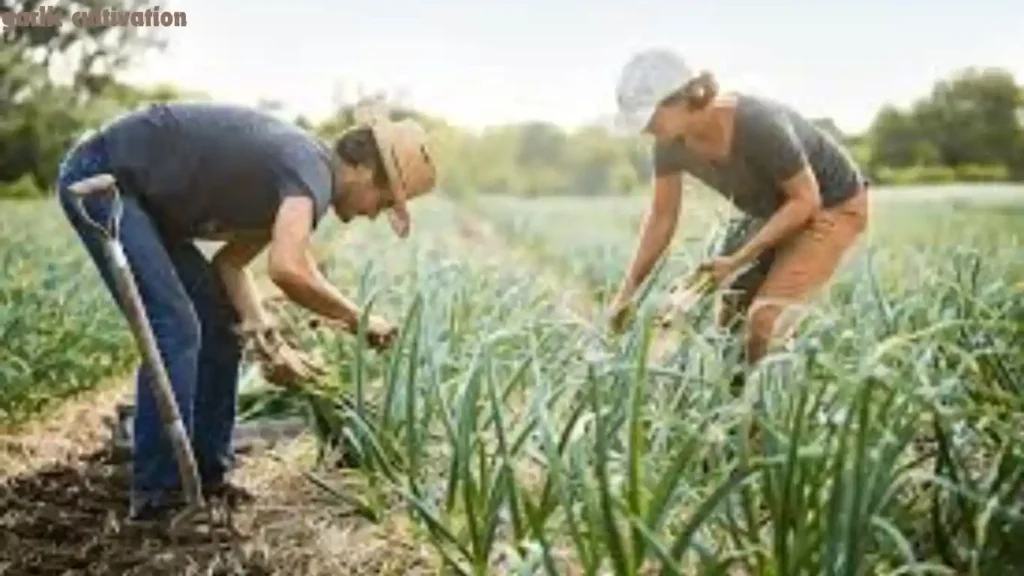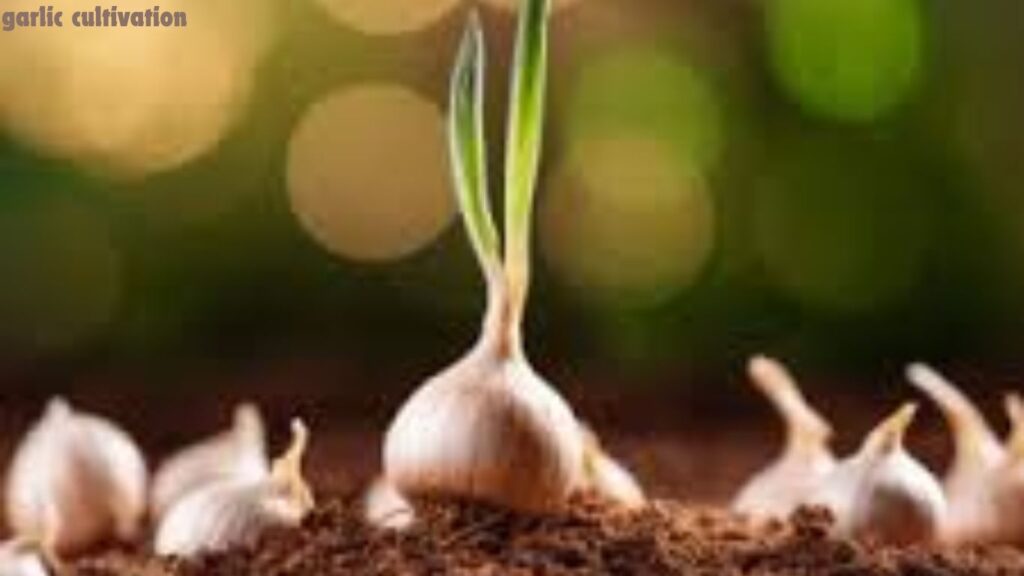Unique Garlic Cultivation Techniques, Variety & Disease
Garlic Cultivation, a nail in kitchens around the world, isn’t just known for its culinary ideals but also its healing properties. Understanding the garlic growing stages is basic for anybody expecting to develop this flexible yield.
Garlic Cultivation has a place with the Allium family, which also includes onions, leeks, and shallots. Growing garlic Cultivation is a compensating cycle that consists of a few phases, each needing exact issues and care.
Garlic has been made for millennia and is appreciated for its flavor and medical benefits.
It’s not difficult to create, making it among home greenhouse workers and business herders the same. This guide will walk you through the garlic growing stages, from selecting the right variety to collecting and converting your garlic.
Selecting the Right Garlic Cultivation Variety
Picking the right garlic Cultivation collection is the most critical stage in comprehending garlic-creating stages.
Garlic comes in two essential sorts: hardneck and softneck. Hardneck garlic is known for its profound areas of strength and makes a bloom tail called a scape.

Softneck garlic Cultivation, on the other hand, is softer and has a more extended time span of functional comfort.
Well-known garlic Cultivation groups reduce Rocambole, Porcelain, and Purple Stripes for hardneck types, while softneck types combine Artichoke and Silverskin.
Your choice will depend upon your current circumstances and individual tendencies. Hardneck varieties are more equipped for colder conditions, while softneck varieties prosper in milder sections. Selecting a deal that suits your creating conditions is required.
Think about factors such as community climate, soil type, and season length. Analyzing and picking the right collection will set the basis for a thriving garlic-creating trip.
Preparing the Soil for Garlic Cultivation and Planting
Setting up the soil is an essential move toward the garlic Cultivation developing settings.
Garlic leans towards very much depleted, loamy soil with a pH someplace in the range of 6.0 and 7.0. Prior to planting, lead a dirt test to determine its complement levels and pH.
This will help you make any modifications. To set up the establishing bed, begin by destroying weeds and dissolving the dirt to a depth of no less than 8 inches.
Reduce natural matter, like fertilizer or very much bad excrement to further develop soil design and ripeness.
Garlic Cultivation requires nitrogen-rich soil, so believe in adding a proper waste or natural edit high in nitrogen. Ensuring the dirt is properly pre-arranged will advance sound root progress and powerful plant growth, making way for a useful garlic crop.
Planting Garlic: The Initial Stage
The underlying phase of garlic Cultivation planting is climactic in the garlic developing stages. The best option to establish garlic is in the fall, around 4 a month and a half before the ground freezes. This allows the cloves to lay out roots before winter blahs.
Begin by selecting solid, illness-free garlic bulbs. Separate the bulbs into individual cloves, safeguarding the papery husk.
Pick the biggest cloves for planting, as they will have the greatest bulbs. Plant the cloves pointed end up, around 2 inches down, and 4-6 inches divided, in columns distributed 12-18 inches separated.
Cover them with soil and a layer of mulch to shield them from the cold and to mediate dampness. Honest setting procedures guarantee solid root progress, setting a strong starting point until the end of the garlic growing stages.
Germination and Early Growth
During the germination and early development stage, garlic cloves begin to foster roots and shoots.
This stage is basic in the garlic Cultivation growing stages, as it specifies the beat for the plant’s general well-being and efficiency. Garlic normally requires 4 a month and a half to sprout.
During this period, guarantee the dirt-staying parts are reliably damp and not saturated. Mulching holds dampness and controls weeds.
In freezing environments, the mulch additionally gives security against ice. Screen the beginners as they arise, exploring areas of strength for shoots.

Frail or shaded shoots might present issues with soil conditions or selecting deepness. Early respect, like thin weeding and honest watering, ensures that youthful garlic plants foster a powerful root floor and sound foliage.
Vegetative Growth Phase
The vegetative development stage is crucial in the garlic Cultivation development stages. During this stage, garlic plants center around developing leaves and roots.
This period normally stays from late winter until pre-summer or late spring, depending on your establishing time and environment.
During vegetative growth, garlic Cultivation needs normal watering to keep up with soil dampness, especially in dry cases. Water profoundly, however, stays away from waterlogging, which can prompt root pollution.
Guarantee the dirt is very much drained and reliably watered. Increasing the board is also urgent. Garlic Cultivation plants are weighty branches, mainly during the vegetative stage.
Applying a fair amount of waste or fertilizer tea can provide important accessories. Nitrogen is particularly significant during this stage in helping green expansion.
Invariably review your plants for signs of irritations and illnesses. Early title and appeal can forestall serious issues. Keeping the bed without weeds is additionally basic, as weeds can rival garlic for supplements and water.
Garlic Cultivation Scape Formation
As garlic Cultivation plants mature, they enter the phase of escape arrangement. Garlic scapes are long, wavy blooms that rise out of the focal point of the plant. While outwardly striking, scapes can divert energy from bulb collection whenever left unchecked.
Understanding the purpose of garlic Cultivation scapes is basic to overseeing them. Scapes are created to produce blossoms and, finally, seeds. Notwithstanding, permitting garlic to bloom can reduce bulb size and quality.
Therefore, most cultivators like to destroy scapes to designate bigger bulb promotions. It is easy to Collect scapes. At the point when they start to twist, delicately turn them downwards until they snap off.
Scapes are edible and can be utilized in different culinary dishes, giving a delicate garlic flavor. Destroying scapes improves bulb development as well as urges the plant to zero in its energy on bulb performance.
Bulb Development Stage
The bulb advancement stage is critical in the garlic developing stages, where the plant establishes its energy toward bulb development.
This regularly happens in pre-summer to late spring, delegation upon the variety and developing cases. During this stage, containing the development of the garlic bulbs is essential.

Bulbs ought to start to enlarge and finish up, showing a fruitful turn of events. Factors, for example, soil fruitfulness, dampness levels, and temperature, can impact bulb size and quality.
Keeping up with dedicated watering and proper complement levels is important for ideal bulb advancement.
Keep away from overwatering, as this can prompt decay and parasitic infections. Also, guarantee the dirt is all around finished to forestall waterlogging. As the bulbs adult, the vegetation might begin to yellow and dry out.
This is a typical piece of the garlic Cultivation developing relations and signs that the bulbs are coming development. Honest respect during this stage ensures that garlic Cultivation bulbs come at their greatest capacity.
Pest and Disease Management
Irritation and infection of the board are urgent during the garlic Cultivation development stages to guarantee a sound yield.
Normal bugs that affect garlic include aphids, thrips, and nematodes, while sicknesses like white decay, rust, and garlic mosaic infection can also present huge dangers.
Directing safeguard measures is vital to overseeing bitterness and sicknesses. This includes rehearsing crop turns, keeping up with just dividing among plants, and offering great air dissemination.
Mulching can likewise help with smothering weeds and lessen the risk of soil-borne diseases.
Maturation and Harvest Timing
The development and reap timing stage is basic in the garlic developing stages, as it determines when to gather your garlic Cultivation for ideal taste and capacity life.
Garlic Cultivation ordinarily develops in pre-summer to late spring, delegation upon the variety and developing cases.
Selecting the perfect option to reap garlic Cultivation includes seeing the foliage and bulbs. As the garlic bulbs are shared, the foliage will begin to become yellow and dry out. This is an indication that the bulbs are designed for gather.
Moreover, you can delicately discover a couple of bulbs to really look at their size and growth.
Reaping garlic Cultivation with impeccable timing ensures that the bulbs have fully evolved and will store well. Try not to collect too soon, as minor bulbs might not have arrived at their standard or flavor.
On the other hand, standing by for overly long to reap can bring about decayed bulbs with eating grade.
Post-Harvest Handling and Curing
Post-reap taking care of and reducing are climactic strides in the garlic developing stages to guarantee the life span and nature of your yield.
Following collection, garlic bulbs should be properly restored to upgrade their taste and capacity life.
To fix garlic, tenderly forget about any abundance of soil or flotsam and jetsam from the bulbs, being mindful so as not to harm the external layers.
Leave the foliage appended to the bulbs, as this works with the restoring system. Hang the garlic bulbs in packs or spread them out in a solitary layer in a warm, dry area with great air dissemination, like a very ventilated shed or carport.
Allow the garlic Cultivation bulbs to be cured for 2 a month, depending on the mugginess and temperature of the relieving climate.
During this time, the external layers of the bulbs will dry and solidify, shaping a defensive layer that forestalls pollution and keeps up with taste.
Saving Garlic for Seed
Saving garlic Cultivation Cultivation for seed is a considerable part of the garlic developing stages, allowing you to protect your number one variety and increase your garlic crop for future seasons.
Choosing the best bulbs for seed ensures the quality and efficiency of your garlic crop.
To save garlic Cultivation for seed, pick sound, infection-free bulbs with beneficial qualities like size, taste, and variety.
Put away a piece of your reap explicitly for seed, choosing bulbs that are completely designed and removed from any signs of harm or sickness.
Store the seed garlic bulbs in a cool, dry area with great airflow until setting time. Try not to store them in that structure of mind to temperature frictions or high moistness, as this can affect their experience.
Garlic in Crop Rotation and Companion Planting: Including garlic in crop rotation and guide planting schemes is a restorative practice in the garlic growing stages, boosting soil health and pest control while maximizing yields.
Garlic is a natural pest barrier and can help stop weeds, making it an excellent choice for crop cycle and half planting.
When planning crop rotation, rotate garlic Cultivation with other crops to break pest and disease cycles and fill soil nutrients. Avoid planting garlic or other allium crops in the same bed year after year to prevent the buildup of soil-borne pests and diseases.
In guide planting, garlic can be paired with a variety of vegetables and herbs to improve growth and flavor. Some popular companion plants for garlic include tomatoes, peppers, lettuce, and herbs such as basil and parsley.
Garlic’s strong aroma can help repel pests that are attracted to these companion plants, reducing the need for chemical pesticides. When planning your garden layout, consider the growth habits and spacing conditions of both garlic and its companion plants.
Conclusion
Comprehending the garlic Cultivation growing stages is essential for anyone looking to cultivate this universal crop successfully. By following the steps digested in this guide, you can maximize your yield and enjoy fresh, home-grown garlic all year round.
Here are some final tips to help you succeed in growing garlic:
Select the Right Type: Choose garlic types that are well-suited to your environment and growing requirements.
Prepare the Soil: Confirm that the soil is well-drained, fertile, and free from weeds before planting.
Plant at the Right Time: Plant garlic cloves in the fall for best results, allowing them to select roots before winter.
Provide Acceptable Care: Water and fertilize garlic plants regularly, and observe for pests and diseases.
FAQS
How long does it take for garlic to be fully grown?
Once you get cloves in the ground, there’s little to do but wait. So, how long does it take garlic to grow? In the middle, you’ll be waiting about 9 months from seed to yield. Here’s a novice’s guide for choosing, planting, growing, and gathering garlic in your home garden.
What is the duration of garlic?
Garlic is a crop of 4 ½ to 5 months period. When the leaves start twisting yellowish or brownish and show signs of drying up, the crop is ready for yield.
What is the lifespan of garlic?
Whole garlic bulbs will last 3 to 6 months when properly stored away from heat and humidity. Keep the papery layers on the bulbs intact; they help control water from getting into the cloves.
Is potash good for garlic? Cucumber Plant
Rather, opt for a high-potassium fertilizer. The Garlic Farm guides at this point to ‘apply sulfate of potash to your garlic every six weeks to give it all the nutrients it needs to grow successfully’.
Is calcium good for garlic?
Garlic plants need a balanced diet of nutrients in order to grow and develop properly. The most essential nutrients for garlic plants are nitrogen, phosphorus, potassium, calcium, and sulfur. These nutrients can be found in organic matter, such as compost, and in saleable fertilizers.
Where is the best place to plant garlic?
In available, an area with full sun (between 6 and 8 hours a day) is suggested for garlic. If planted in a dark area, the bulbs will not develop properly and will be very small. Look up the specific conditions for the garlic types you’d enjoy growing.
Also Read

Thank you for sharing your precious knowledge. Just the right information I needed. By the way, check out my website at UQ4 about Thai-Massage.